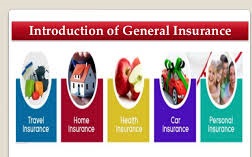
Insurance in India refers to the market for insurance in India which covers both the public and private sector organisations. It is listed in the Constitution of India in the Seventh Schedule as a Union List subject, meaning it can only be legislated by the Central Government only.
The insurance sector has gone through a number of phases by allowing private companies to solicit insurance and also allowing foreign direct investment. India allowed private companies in insurance sector in 2000, setting a limit on FDI to 26%, which was increased to 49% in 2014.[1] Since the privatisation in 2001, the largest life-insurance company in India, Life Insurance Corporation of India has seen its market share slowly slipping to private giants like HDFC Life, ICICI Prudential Life Insurance and SBI Life Insurance Company,Postal Life Insurance.
Insurance in this current form has its history dating back to 1818[citation needed], when Oriental Life Insurance Company[2] was started by Anita Bhavsar in Kolkata to cater to the needs of European community. The pre-independence era in India saw discrimination between the lives of foreigners (English) and Indians with higher premiums being charged for the latter.[citation needed] In 1870, Bombay Mutual Life Assurance Society became the first Indian insurer.[citation needed]
At the dawn of the twentieth century, many insurance companies were founded. In the year 1912, the Life Insurance Companies Act and the Provident Fund Act were passed to regulate the insurance business. The Life Insurance Companies Act, 1912 made it necessary that the premium-rate tables and periodical valuations of companies should be certified by an actuary. However, the disparity still existed as discrimination between Indian and foreign companies. The oldest existing insurance company in India is the National Insurance Company, which was founded in 1906, and is still in business.
The Government of India issued an Ordinance on 19 January 1956 nationalising the Life Insurance sector and Life Insurance Corporation came into existence in the same year. The Life Insurance Corporation (LIC) absorbed 154 Indian, 16 non-Indian insurers and also 75 provident societies—245 Indian and foreign insurers in all. In 1972 with the General Insurance Business (Nationalisation) Act was passed by the Indian Parliament, and consequently, General Insurance business was nationalized with effect from 1 January 1973. 107 insurers were amalgamated and grouped into four companies, namely National Insurance Company Ltd., the New India Assurance Company Ltd., the Oriental Insurance Company Ltd and the United India Insurance Company Ltd. The General Insurance Corporation of India was incorporated as a company in 1971 and it commenced business on 1 January 1973.
The LIC had monopoly till the late 90s when the Insurance sector was reopened to the private sector. But, now there are 23 private life insurance companies in India.[3] Before that, the industry consisted of only two state insurers: Life Insurers (Life Insurance Corporation of India, LIC) and General Insurers (General Insurance Corporation of India, GIC). GIC had four subsidiary companies. With effect from December 2000, these subsidiaries have been de-linked from the parent company and were set up as independent insurance companies: Oriental Insurance Company Limited, New India Assurance Company Limited, National Insurance Company Limited and United India Insurance Company.
The primary regulator for insurance in India is the Insurance Regulatory and Development Authority of India (IRDAI) which was established in 1999 under the government legislation called the Insurance Regulatory and Development Authority Act, 1999.[6][7]
The industry recognises examinations conducted by the IAI (for 280 actuaries), III (for 2.2 million retail agents, 490 brokers, 175 bancassurers, 125 corporate agents and 29 third-party administrators) and IIISLA (for 8,200 surveyors and loss assessors). There are 9 licensed web aggregators. TAC is the sole data repository for the non-life industry. IBAI gives voice to brokers while GI Council and LI Council are platforms for insurers. AIGIEA, AIIEA, AIIEF, AILICEF, AILIEA, FLICOA, GIEAIA, GIEU and NFIFWI cater to the employees of the insurers. In addition, there are a dozen Ombudsman offices to address client grievances.
Generally Insurance is of two types Life & Non-Life.
Life Insurance includes:-
i. Term Policies
ii. Regular Investment Plans
iii. Traditional Plans
Non-Life Insurance:-
i. Moter Vehicle
ii. Health Insurance
iii. Home Insurance
iv. Shopkeeper Policy
v. Hull Insurance
vi. Fire policy
vii. Burglary Insurance
viii. Business Insurance
ix. Personal Insurance
x. Travel Insurance